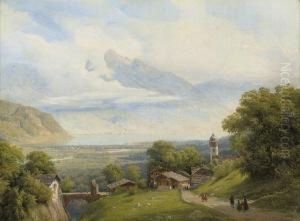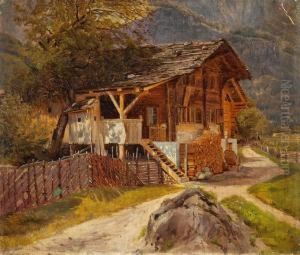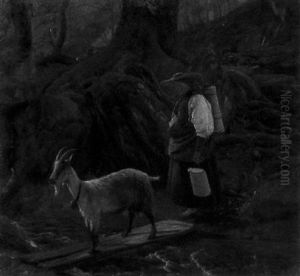Rudolf Von Normann Paintings
Rudolf von Normann was a distinguished German landscape and marine painter born on November 18, 1806, in Gumbinnen, East Prussia (now Gusev, Russia). His artistic journey began under the guidance of Wilhelm Krause in Berlin, and he further honed his skills at the Düsseldorf Academy of Arts, where he was significantly influenced by the teachings of Johann Wilhelm Schirmer, a leading figure in the Düsseldorf school of painting, which emphasized detailed landscapes and was pivotal in the development of 19th-century German art.
Von Normann's work is characterized by its meticulous attention to detail, vibrant color palette, and the ability to capture the sublime nature of landscapes and seascapes. He was particularly adept at depicting the various moods of the sea, from calm sunlit coasts to tempestuous maritime scenes. His travels across Europe, including stays in Italy and the Netherlands, enriched his palette and broadened his thematic scope, integrating elements of Romanticism with the Realism that was becoming prevalent in mid-19th-century European art.
Settling in Düsseldorf, von Normann became an integral part of the artistic community there, contributing to the city's reputation as a leading art center in Germany. His works were exhibited widely, gaining him recognition and accolades. Despite the prominence of the Düsseldorf School's landscape painters, von Normann managed to distinguish his work through his unique interpretation of light and atmosphere, which imbued his scenes with a sense of emotional depth and realism.
Rudolf von Normann's legacy is preserved in the collections of various museums and in the admiration of collectors of 19th-century European art. His dedication to landscape and marine painting not only exemplifies the technical and thematic evolutions of his time but also reflects a deep reverence for the natural world. He passed away on August 15, 1882, in Düsseldorf, leaving behind a body of work that continues to be celebrated for its beauty and historical significance.





